-
United Kingdom
- Sign in
Updated: 10 July 2020
Whatever the season, small businesses work harder on any given day than Mr Claus on Christmas Eve. Santa may take all the glory, but it’s the determined businesses around the country that deserve the real recognition.
To celebrate the work they do, we’re presenting our very own Christmas Carol, looking at small business past, present and future over the next few weeks. First up, we look at the history of small businesses, learning what life was like for entrepreneurs up until the early 20th century.
In medieval times, businesses were small operations working mostly in local economies. Farmers sold grain to merchants for sale at local markets, while a single blacksmith would serve the needs of the surrounding area. They were typically single-man or family operations, working for themselves without employees.
To meet the pressure of increasing competition, skilled craftsmen banded together to form guilds. The guild marked a sign of quality, and would often be associated with a particular town or city. They also acted as early unions, scheduling ‘no-work feast days’.
During the industrial revolution, new technologies such as steam power allowed large factories to greatly increase production. Due to economies of scale the lone blacksmith could no longer compete, and big business grew to dominate. Coupled with international shipping, electric motors and gasoline, the landscape quickly changed forever.
It was only with this rise of ‘big business’ that the term ‘small business’ became common, as it was needed to compare the two. The below graph shows the use of the term ‘small business’ in English books.
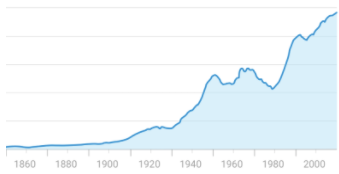
While wealthy industrialists were riding high, smaller entrepreneurs also took advantage of new opportunities from a rapidly expanding economy. The manufacturing boom and imports from around the empire meant a wealth of new products on offer, providing new opportunities for shopkeepers and merchants. This increase in trade and industry then required servicing by transport, banks, clerks and insurers.
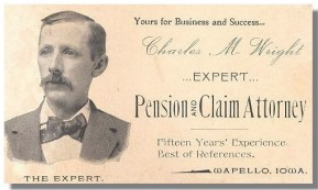
A Victorian business card
Towns and cities also grew rapidly as people flooded there for work. Infrastructure was needed to support this expansion, creating work in everything from building houses to selling milk. The growth meant more schools, doctors, lawyers, shops, pubs and much more. If you were a savvy entrepreneur, there was a small business waiting for you.
However, while the economy grew, it was still a very precarious place for a small business owner. Income was modest and access to credit was limited, leaving them vulnerable to competition and difficult periods of trade. Reputation and contacts were still a major factor in business arrangements, and working class businessmen trying to elevate themselves to the middle class were more susceptible to hard times.
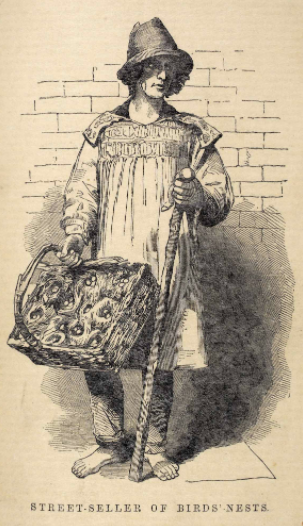
Known as costermongers, street sellers had a particular set of reliable wares that they sold from a barrow or donkey-cart. It could be anything from oysters and hot eels to crumpets, candles, books or live birds. There was an estimated 30,000 costermongers in London during the late 1800s, and most middle and working class households depended on them.
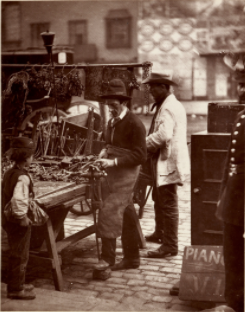
A street-seller locksmith
Early Victorians didn’t put prices on their goods. Not only did this allow for haggling, but meant they could set a higher price for customers who looked more affluent.
Goods were also kept in drawers, cupboards or cases and could only be touched by the shopkeeper. In a shoe shop for example, you would only be able to see closed boxes. Rather than browse, you would describe what you needed shoes for and the clerk would select some for you try on.
As time went by, more shop owners began trying to make extra sales with displays of goods on counters with the prices noted. Window displays then followed, with shops installing plate glass fronts to attract customers as they walked by. Stores got larger, and “shop walkers” were employed that were half security guard and half shop assistant.
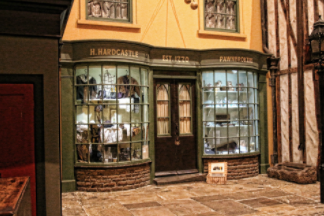
A Victorian shop front
Shops were unique, with different suppliers and product ranges. To prevent men walking into an embarrassing situation, women’s clothes were kept on the 2nd floor. Some sold counterfeit goods, while others marked products as “smuggled and stolen” to make them more desirable. As a result, shoppers would go back to vendors they trusted, and manufacturers began prepackaging goods to ensure quality and weight.
It was commonplace for small businesses to bring their goods or services to customers’ homes. Bakers delivered daily, while milk was delivered and measured out at the door, often twice a day. You’d then make payment for the week on Saturdays.
Others goods such as coal were delivered too. After ordering at the coal yard, your selected grade of coke for the boiler and coal for the fire was brought and deposited in a bunker outside. You would address tradesmen by the product they carried – “Coalman, Milkman, Dustman” and so on.
Insurance was also collected door-to-door. Life insurance was most popular as it was a terrible stigma not to be able to afford a funeral. A company agent would collect each month and log the payment in his book. They’d try to upsell them to contents insurance, or house insurance if they owned their home.
Continue the journey with Small Business Present – a look at their place in the modern world and the trends that led them there. And finally, in Small Business Future we look at tech and cultural trends that will shape business life in the years to come.

5779 REVIEWS